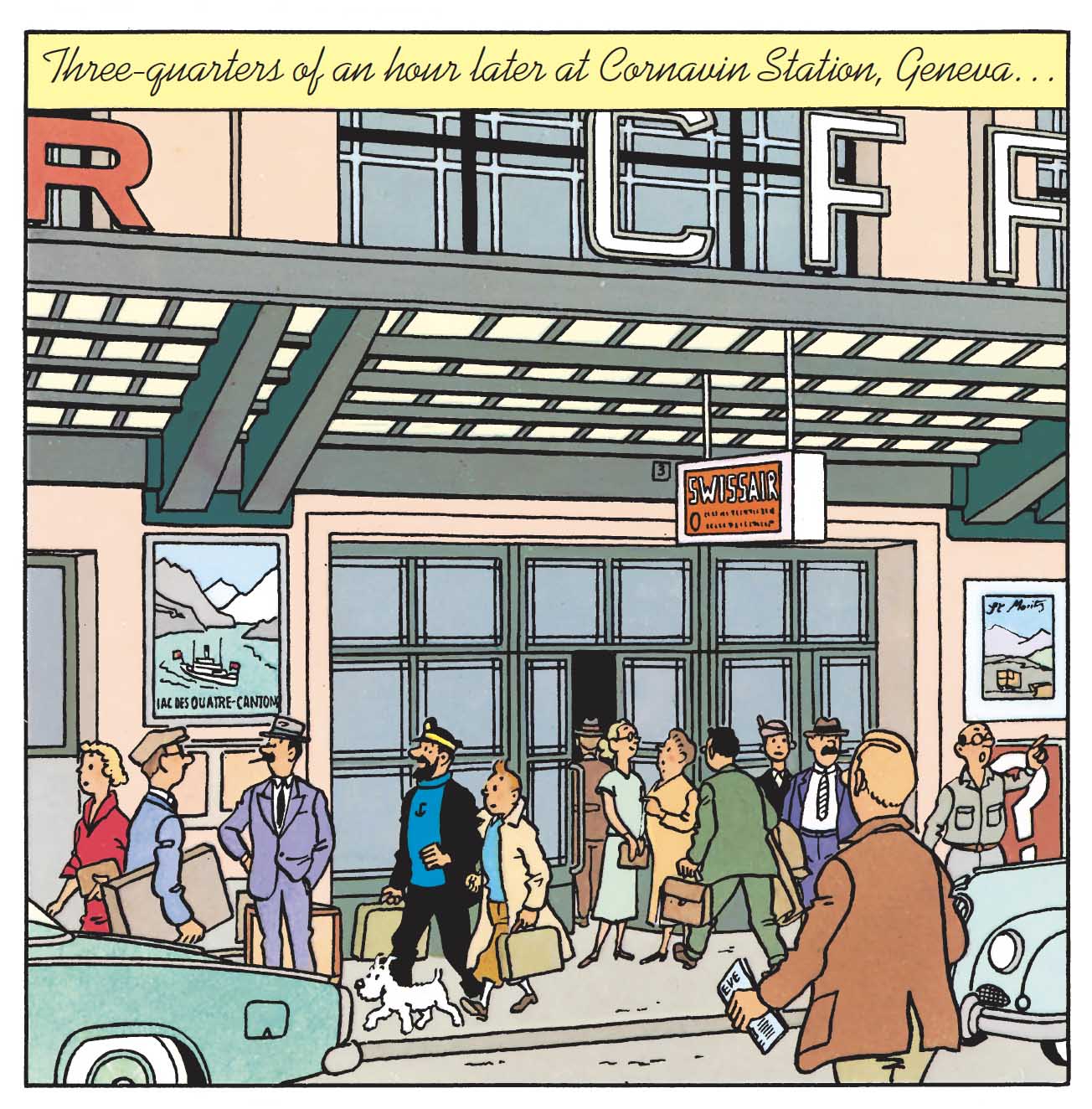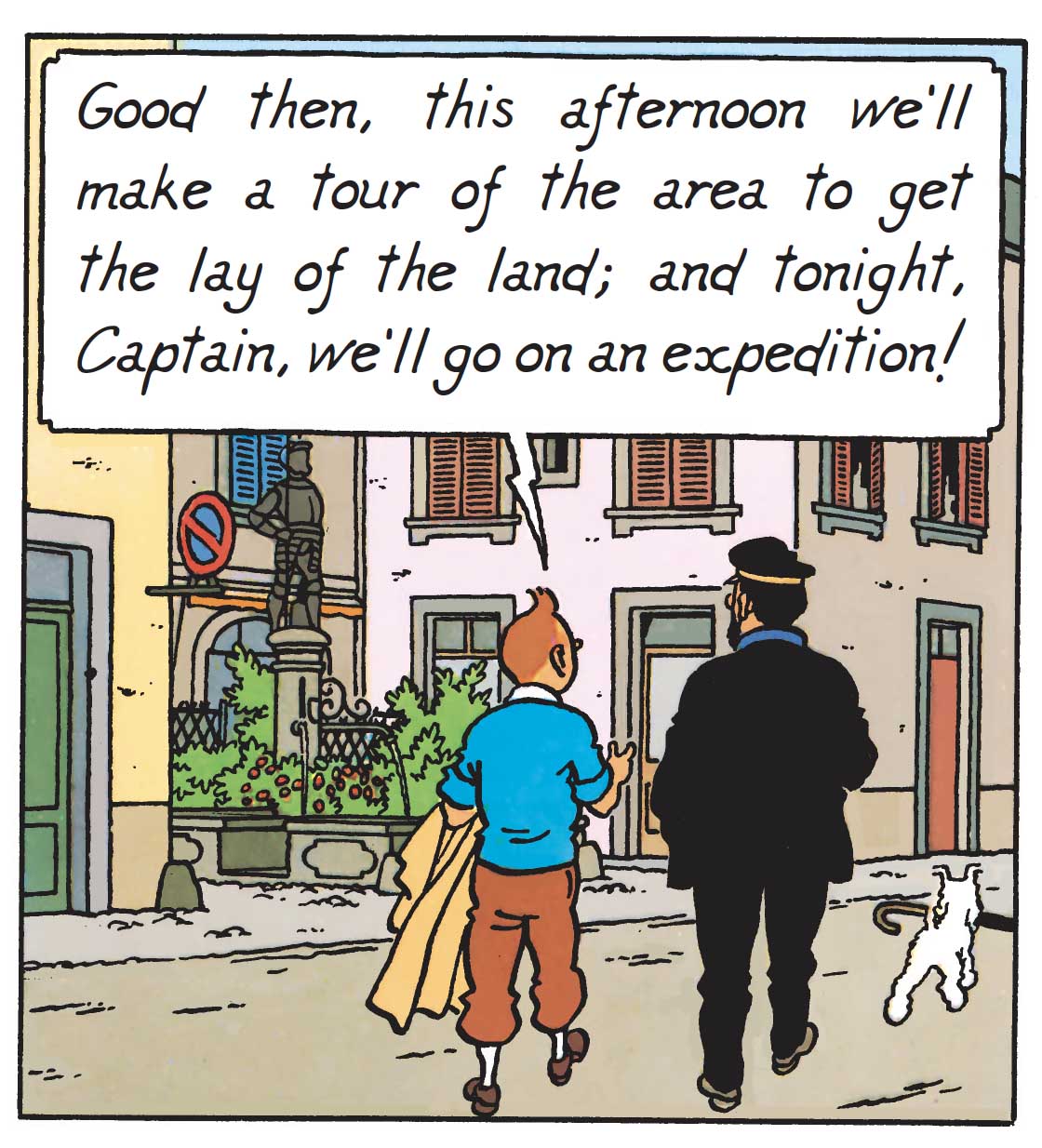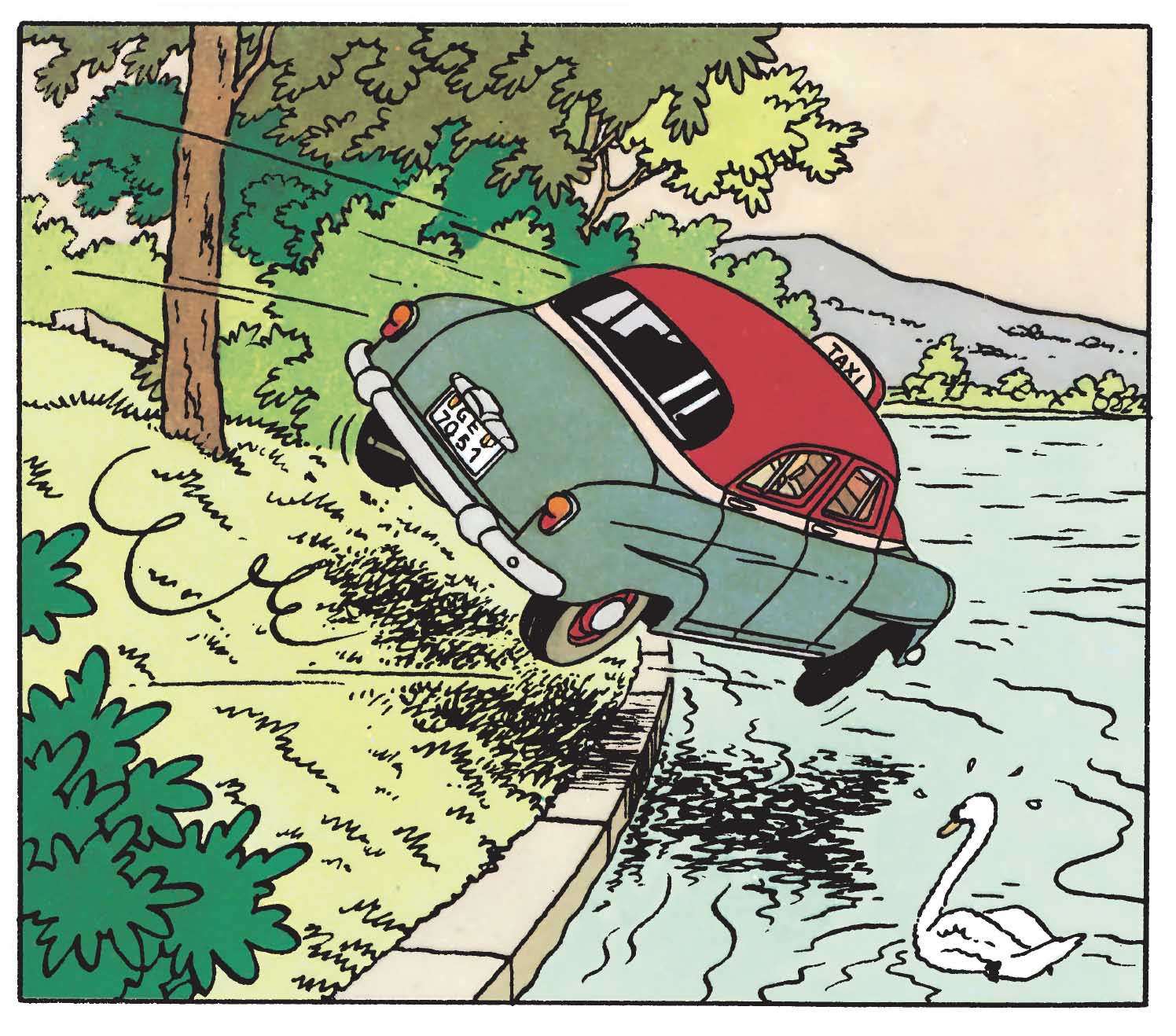The Speaking Vignette: Hergé in Immersion

Something has changed. Can you see it?
Wait… look a little closer.
Hergé is no longer just sitting at his drawing table. Thanks to the Studios Hergé and his close-knit team of collaborators, he can now step out of the frame and walk the very paths of the story.
For The Calculus Affair, he adopts a new working method, one that’s been slowly taking shape over time. In Geneva, Hergé goes on location, follows in Tintin’s footsteps, studies curves and angles, and takes the time to fully immerse himself. For an author once said to be reluctant to travel, he’s finally embraced the journey.
What once seemed difficult to achieve in the fictional land of Syldavia now becomes possible in the real landscapes of Switzerland. And it’s just as well, Professor Calculus is there. Hergé initiates a real turning point in his approach to storytelling: more immersive, more physical, almost journalistic.
In Nyon, in the canton of Vaud, realism settles in naturally : take the statue of Maître Jacques on Rue de Rive, a discreet nod to this new documentary precision. Pedestrians and pavements appear in a scene marked by calm, balance, and studied perspective. At first glance, it seems ordinary. And yet, everything is there. You can feel the air, the light, the weight of the moment.

Around him, the Studios Hergé operate with method and rigor. The Cornavin train station, featured in the album, is depicted with striking accuracy. Hergé himself takes photographs, studies the volumes, refines the angles. The buildings are reconstructed down to the smallest detail. A new dynamic is now in place: Hergé is no longer alone at his table, he’s out in the field, and his collaborators ensure visual continuity back at the studio.
In this album, the thread of the story was sparked by a real news item spotted by Hergé in the Belgian weekly Le Face à Main. And then, there’s this scene. A car speeds past, cutting them off. The taxi carrying Tintin and Haddock skids, plunges into Lake Geneva. From that point on, everything falls into place: the lake, the quay, the car, the splash. The line becomes a witness. Hergé wanted to locate the exact spot where a car could realistically leave the road and sink into the lake.

As a true conductor, Hergé remains solely responsible for the characters, seeking out expressive poses and a wide range of gestures. And here too, a change is clearly felt: it’s now Hergé himself who acts out the poses, while one of his collaborators drafts the preliminary sketch. Yet another new practice born within the Studios Hergé.
In this new way of creating, Hergé is no longer alone. Around him, the Studios Hergé form a well-oiled machine. Bob De Moor, Roger Leloup, Jacques Martin, Josette Baujot, each brings their own eye, their own craft. Together, they help Tintin step into a world more lifelike than ever.
Texts and pictures © Hergé / Tintinimaginatio - 2025




 News
News Forums
Forums E-books
E-books

